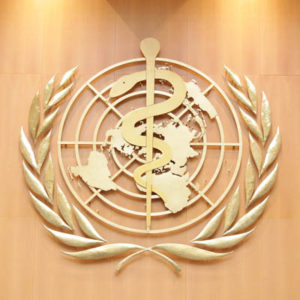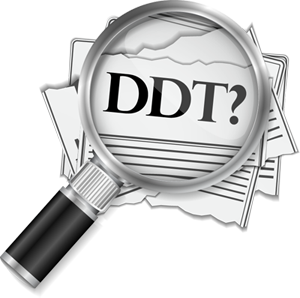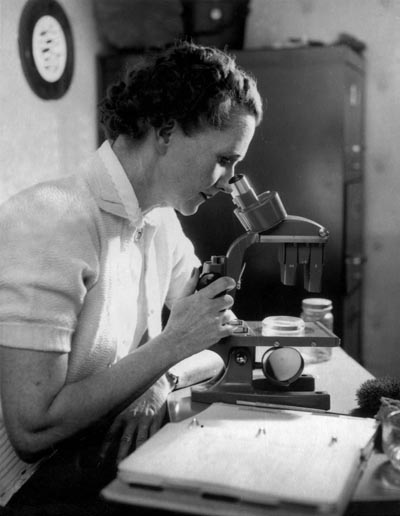INTRODUCTION
A member of the public has requested that RCLA review a newspaper column appearing in the The Philadelphia Inquirer (P.I.) and featuring an interview with Dr. Paul Offit, author and pediatrician, specializing in vaccines and infectious diseases. The newspaper piece, “Five Questions: From lobotomies to margarine, what scientists got wrong,” included a brief discussion of Rachel Carson and DDT, under the subheading: “… DDT was vilified. It was banned. Why wasn’t that a good thing?” The P.I. article atributes the following statements to Dr. Offit:
“What I’m trying to say is that she [Rachel Carson] wasn’t exactly right about DDT. She overstated it. When you’re as powerful a writer as she is [sic], I don’t think you can say that DDT causes children to suddenly die. She scared people disproportionately. And while she was right that DDT should have been eliminated for agricultural use, it shouldn’t have been discontinued for public health use. Tens of millions of children have died from malaria. The proof is in the pudding. DDT was reinstated by the World Health Organization in 2006.” (Bauers, S., “Five Questions: From lobotomies to margarine, what scientists got wrong,” The Philadelphia Inquirer, 4-16-17)
Statements regarding DDT from the P.I. piece that lack references
#1) [Carson wrote] “DDT causes children to suddenly die.”
#2) “It [DDT] shouldn’t have been discontinued for public health use.”
#3) “DDT was reinstated by the WHO in 2006”
RCLA’s Responses
Regarding #1: Silent Spring’s first chapter, “A Fable for Tomorrow” describes various hazardous incidents that turn out to have been linked to chemical pesticides in wide use up to that time (1945-1962) — without associating a specific chemical pesticide with any particular hazard. The victims of these untoward effects were people, pets, wildlife and plants. Detailed descriptions of such incidents that identify the individual chemical pesticides associated with these adverse events appear throughout Silent Spring’s remaining chapters.
The “Fable” includes the following passage: “There had been several sudden and unexplained deaths…among children, who would be stricken suddenly while at play and die within a few hours.” (Silent Spring, page 2). Although the pesticide involved is not identified here, this passage closely matches the incidents where several children are described as dying soon after exposure to the insecticide parathion in chapter 3, “Elixirs of Death,” (Silent Spring, page 28). Two of the deaths occurred in Florida, where tests established parathion as the cause. In Wisconsin, two other children contacted sources of parathion and died suddenly within hours. Parathion, a highly toxic organophosphate chemical related to the nerve gas Sarin, has since been banned in the US. (Carson’s reference for the parathion incidents was Clinical Toxicology of Commercial Products, Williams & Wilkins, 1957, and Bulletin of Supplementary Material: Clinical Toxicology of Commercial Products vol 5,# 9, U. of Rochester)
In examining Silent Spring’s text no specific association of DDT with causing “children to suddenly die” (per Dr. Offit) was found to be similar to the description of the unidentified pesticide effects appearing on page 2 in “A Fable for Tomorrow” — that we found to be linked with information for parathion in chapter 3.
A check of the scientific literature did find a case from 1945 where a child’s death was associated with DDT and reported in Pesticides and Neurological Diseases: “A child of 1 year 7 months found and ingested about 1 ounce of a 5% DDT solution in kerosene…Within 10 minutes he vomited. Within a few hours he became comatose and had convulsions…In spite of treatment he died 4 hours after drinking the DDT solution. The relative roles of DDT and kerosene… were tested. Similar amounts of kerosene by itself and kerosene containing 5% DDT were fed to baboons. The one given the DDT solution lost the use of his hind limbs within 15 minutes, developed tremor of the muscles of the legs, tail and back, convulsed and died after 1 hour. The baboon given kerosene without DDT was unaffected and was alive and well three weeks later.” (Hill and Robinson in The British Medical Journal I, 845, 1945 – cited in Ecobichon & Joy, Pesticides and Neurological Diseases, 2nd edition, CRC Press, 1993).
Regarding #2: The USEPA decision on DDT in 1972 banned uses of DDT [in the USA] on crops, allowing only quarantine and public health uses and manufacture for export.” (p. 234, Dunlap, T., DDT: Scientists, Citizens and Public Policy, 1981, Princeton U. Press). Note: There do not appear to be any US manufacturers of DDT at present.
“Under the 2001 Stockholm Convention on Persistent Organic Pollutants, DDT was banned for agricultural uses worldwide but the use of DDT [was and] is still permitted in countries that need it…to control malaria [WHO guidelines for use of DDT in malaria control limit applications to the interior walls of dwellings only.] (Berry, B., Banning DDT: How Citizen Activists in Wisconsin Led the Way, Wisconsin Historical Society Press, 2014)
 Regarding #3: Yes, DDT was reinstated by WHO in 2006, but that is not the current UN stance on the topic. In 2006 the World Health Organization (WHO) instituted a program to combat malaria supporting the use of bed nets, combination drug therapy including artemisinin and DDT spraying of interior walls in certain countries. In 2009, however, the UNEP and WHO launched new projects to phase out malaria by the early 2020s through eliminating potential mosquito breeding sites, using mosquito-repellant trees, and fish that eat mosquito larvae. A stated objective of these projects was to reduce the use of DDT by 30% in 2014 and phase it out by the early 2020s. The projects would involve 40 countries in Africa, the Eastern Mediterranean and Central Asia. (“Reporter’s Notebook,” Pesticide & Toxic Chemical News, May 11, 2009).
Regarding #3: Yes, DDT was reinstated by WHO in 2006, but that is not the current UN stance on the topic. In 2006 the World Health Organization (WHO) instituted a program to combat malaria supporting the use of bed nets, combination drug therapy including artemisinin and DDT spraying of interior walls in certain countries. In 2009, however, the UNEP and WHO launched new projects to phase out malaria by the early 2020s through eliminating potential mosquito breeding sites, using mosquito-repellant trees, and fish that eat mosquito larvae. A stated objective of these projects was to reduce the use of DDT by 30% in 2014 and phase it out by the early 2020s. The projects would involve 40 countries in Africa, the Eastern Mediterranean and Central Asia. (“Reporter’s Notebook,” Pesticide & Toxic Chemical News, May 11, 2009).
DDT’s Potential Adverse Impacts on People
The list of DDT’s untoward effects on human health has expanded since Silent Spring was published. These hazards are detailed below. A further problem associated with DDT is that over time use of DDT can fail to protect individuals from biting mosquitoes due to the mosquitoes developing resistance to DDT. Additionally, applications of DDT that occur outside of the World Health Organization (WHO) guidelines (that specify only treating interior walls of dwellings with DDT for the control of malaria) can derail organic farming programs; this was reported as occurring in Uganda in 2011. (Kron, J., “As an Insecticide Makes a Comeback Uganda Must Weigh its Costs,” NYT, May 19, 2011)
Human Health Hazards of DDT
DDT-associated human health problems have been reported regularly over the years since Silent Spring was published. Most recently, 2015, DDT was classified as a (Group 2A) probable human carcinogen (IARC Monograph June 23, 2015). Based on research, DDT has been associated with: immune system damage (Descotes, 1988), shorter lactation times and increasing number of pre-term births in women (Rogan & Chen, 2005 as found in Karaim, 2005), learning disorders in children (Eskenazi, et al, 2006), reduced sperm production in men (Ayotte, et al. 2001), (Aneck-Hahn, 2006), increased chances of diabetes (Lee et al, 2002), liver cancer (McGlynn et al, 2006), immediate adverse effects in humans from poison control centers: headache, dizziness, nausea, vomiting, incoordination, mental confusion, seizures (Reigert & Roberts, 1999)
Ways to Check on Truthfulness of Data
Do the data explain scientific information and provide references?
Does the information appear to be based on fact finding or on personal commentary/opinion
Are recent reports represented or are references only to earlier reports?
Some Implications of the P.I. Statements
Although no specific reference was given in the P.I. article for any statement attributed to Dr. Offit, he could have been referring to information in the “Fable” (Chapter 1, Silent Spring, page 2) that reported children being “stricken suddenly…and dying within a few hours” due to an unidentified pesticide. If so Dr. Offit incorrectly associated the children’s deaths with DDT. A thorough reading of Silent Spring including chapter 3, “Elixirs of Death” would reveal that Carson gave detailed reports on over 20 other chemical pesticides as well as DDT and as we explain above deaths of children within a few hours of being stricken were linked to the insecticide parathion exposure. How carefully did the Doctor read Silent Spring?
Perhaps, on the other hand he was given incorrect information on DDT and Silent Spring from a secondary source.
After attributing this unreferenced incorrect assumption about children’s deaths and DDT to Rachel Carson, Dr. Offit then criticized her for the association — which she had not made.
A reader of The Philadelphia Inquirer not familiar with Silent Spring (and without the benefit of access to this report) might be convinced by misinformation in unreferenced statements appearing in “Five Questions: From lobotomies to margarine, what scientists got wrong,” that DDT has been unfairly disparaged. In fact the scientific literature contains a number of adverse human health effects listed and referenced above that are associated with DDT (not even including DDT’s hazards to wildlife) indicating that many severe problems are linked to DDT. Furthermore, DDT a long-lived chlorinated hydrocarbon chemical can persist for decades in the environment and is still detected in the bodies of many people and animals although it was banned for most U.S. applications 45 years ago.
Newer strategies have been developed for mosquito control and also as the WHO has proposed, DDT may very well be retired sometime in the 2020s as a tool in the worldwide effort to eliminate malaria.
Our RCLA report on Zika virus in Maryland will appear soon and will include a discussion of non-chemical methods to control its spread by mosquitoes.
It can be difficult for members of the public to fact-check the accuracy of statements such as those appearing in the P.I. article that are attributed to Carson and are without references. We at RCLA are available to provide such a service
Diana Post & Munro Meyersburg, June 2017




